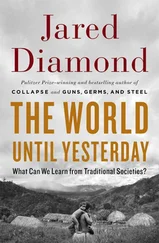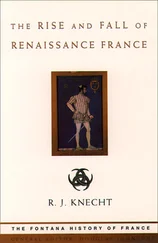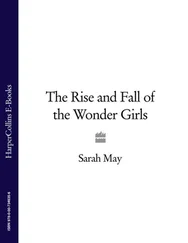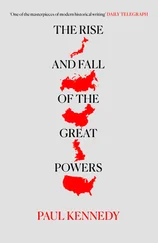Jared Diamond - The rise and fall of the third chimpanzee
Здесь есть возможность читать онлайн «Jared Diamond - The rise and fall of the third chimpanzee» весь текст электронной книги совершенно бесплатно (целиком полную версию без сокращений). В некоторых случаях можно слушать аудио, скачать через торрент в формате fb2 и присутствует краткое содержание. Год выпуска: 1991, ISBN: 1991, Издательство: RADIUS, Жанр: Биология, на английском языке. Описание произведения, (предисловие) а так же отзывы посетителей доступны на портале библиотеки ЛибКат.
- Название:The rise and fall of the third chimpanzee
- Автор:
- Издательство:RADIUS
- Жанр:
- Год:1991
- ISBN:0-09-174268-4
- Рейтинг книги:4 / 5. Голосов: 1
-
Избранное:Добавить в избранное
- Отзывы:
-
Ваша оценка:
- 80
- 1
- 2
- 3
- 4
- 5
The rise and fall of the third chimpanzee: краткое содержание, описание и аннотация
Предлагаем к чтению аннотацию, описание, краткое содержание или предисловие (зависит от того, что написал сам автор книги «The rise and fall of the third chimpanzee»). Если вы не нашли необходимую информацию о книге — напишите в комментариях, мы постараемся отыскать её.
The rise and fall of the third chimpanzee — читать онлайн бесплатно полную книгу (весь текст) целиком
Ниже представлен текст книги, разбитый по страницам. Система сохранения места последней прочитанной страницы, позволяет с удобством читать онлайн бесплатно книгу «The rise and fall of the third chimpanzee», без необходимости каждый раз заново искать на чём Вы остановились. Поставьте закладку, и сможете в любой момент перейти на страницу, на которой закончили чтение.
Интервал:
Закладка:
That question has become answerable only in recent years, through the newly emerging science of'paleopathology': looking for signs of disease (the science of pathology) in remains of ancient peoples (from the Greek word paieo meaning 'ancient', as in paleontology). In some lucky situations, the paleopathologist has almost as much material to study as does a pathologist. For example, archaeologists in the deserts of Chile found well-preserved mummies whose medical condition at time of death could be determined by an autopsy, just as one would do on a fresh corpse in a hospital today. Faeces of long-dead Indians who lived in dry caves in Nevada remained sufficiently well-preserved to examine for hookworm and other parasites.
Usually, though, the only human remains available for paleo-pathologists to study are skeletons, but they still permit a surprising number of deductions about health. To begin with, a skeleton identifies its owner's sex, and his/her weight and approximate age at time of death. Thus, with enough skeletons, one can construct mortality tables like those used by life insurance companies to calculate expected lifespan and risk of death at any given age. Paleopathologists can also calculate growth rates by measuring bones of people of different ages, can examine teeth for cavities (signs of a high-carbohydrate diet) or enamel defects (signs of a poor diet in childhood), and can recognize scars that many diseases such as anaemia, tuberculosis, leprosy, and osteoarthritis leave on bones.
One straightforward example of what paleopathologists have learned from skeletons concerns historical changes in height. Many modern cases illustrate how improved childhood nutrition leads to taller adults: for instance, we stoop to pass through doorways of medieval castles built for a shorter, malnourished population. Paleopathologists studying ancient skeletons from Greece and Turkey found a striking parallel. The average height of hunter-gatherers in that region towards the end of the Ice Age was a generous 5 foot 10 inches for men, 5 foot 6 inches for women. With the adoption of agriculture, height crashed, reaching by 4000 BC a low value of only 5 foot 3 inches for men, 5 foot 1 inch for women. By classical times, heights were very slowly on the rise again, but modern Greeks and Turks have still not regained the heights of their healthy hunter-gatherer ancestors.
Another example of paleopathologists at work is the study of thousands of American Indian skeletons excavated from burial mounds in the Illinois and Ohio River valleys. Corn, first domesticated in Central America thousands of years ago, became the basis of intensive farming in those valleys around 1000 AD. Until then, Indian hunter-gatherers had skeletonsjso healthy it is somewhat discouraging to work with them', as one paleopathologist complained. With the arrival of corn, Indian skeletons suddenly became interesting to study. The number of cavities in an average adult's mouth jumped from less than one to nearly seven, and tooth loss and abscesses became rampant. Enamel defects in children's milk teeth imply that pregnant and nursing mothers were severely undernourished. Anaemia quadrupled in frequency; tuberculosis became established as an epidemic disease; half the population suffered from yaws or syphilis; and two-thirds suffered from osteoarthritis and other degenerative diseases. Mortality rates at every age increased, with the result that only one per cent of the population survived past the age of fifty, as compared to five per cent in the golden days before corn. Almost one-fifth of the whole population died between the ages of one and four, probably because weaned toddlers succumbed to malnutrition and infectious diseases. Thus, corn, usually considered among the New World's blessings, actually proved to be a public health disaster. Similar conclusions about the transition from hunting to farming emerge from studies of skeletons elsewhere in the world.
There are at least three sets of reasons to explain these findings that agriculture was bad for health. Firstly, hunter-gatherers enjoyed a varied diet with adequate amounts of protein, vitamins, and minerals, while farmers obtained most of their food from starchy crops. In effect, the farmers gained cheap calories at the cost of poor nutrition. Today just three high-carbohydrate plants—wheat, rice, and corn—provide more than fifty per cent of the calories consumed by the human species.
Secondly, because of that dependence on one or a few crops, farmers ran a greater risk of starvation if one food crop failed than did hunters. The Irish potato famine is merely one of many examples.
Finally, most of today's leading infectious diseases and parasites of mankind could not become established until after the transition to agriculture. These killers persist only in societies of crowded, malnourished, sedentary people constantly reinfected by each other and by their own sewage. The cholera bacterium, for example, does not survive for long outside the human body. It spreads from one victim to the next through contamination of drinking water with faeces of cholera patients. Measles dies out in small populations once it has either killed or immunized most potential hosts; only in populations numbering at least a few hundred thousand people can it maintain itself indefinitely. Such crowd epidemics could not persist in small, scattered bands of hunters who often shifted camp. Tuberculosis, leprosy, and cholera had to await the rise of farming, while smallpox, bubonic plague, and measles appeared only in the past few thousand years with the rise of cities.
Besides malnutrition, starvation, and epidemic diseases, farming brought another curse to humanity—class divisions. Hunter-gatherers have little or no stored food, and no concentrated food sources such as an orchard or herd of cows. Instead, they live off the wild plants and animals that they obtain each day. Everybody except for infants, the sick, and the old joins in the search for food. Thus, there can be no kings, no full-time professionals, no class of social parasites who grow fat on food seized from others.
Only in a farming population could contrasts between the disease ridden masses and a healthy, non-producing, elite develop. Skeletons from Greek tombs at Mycenae around 1500 BC suggest that royals enjoyed a better diet than commoners, since the royal skeletons were two or three inches taller and had better teeth (on the average, one instead of six cavities or missing teeth). Among mummies from Chilean cemeteries around 1000 AD, the elite were distinguished not only by ornaments and gold hairclips, but also by a four-fold lower rate of bone lesions stemming from infectious diseases.
These signs, of health differentials within local communities of farmers in the past appear on a global scale in the modern world. To most American and European readers, the argument that humanity could on the average be better off as hunter-gatherers than we are today sounds ridiculous, because most people in industrial societies today enjoy better health than most hunter-gatherers. However, Americans and Europeans are an elite in today's world, dependent on oil and other materials imported from countries with large peasant populations and much lower health standards. If you could choose between being a middle-class American, a Bushman hunter, and a peasant farmer in Ethiopia, the first choice would undoubtedly be the healthiest one, but the third choice might be the least healthy.
While giving rise to class divisions for the first time, farming may also have exacerbated sexual inequality already in existence. With the advent of agriculture, women often became beasts of burden, were drained by more frequent pregnancies (see below), and thus suffered poorer health. For example, among the 'Chilean mummies from 1000 AD, women exceeded men in osteoarthritis and in bone lesions from infectious diseases. In New Guinea farming communities today I often see women staggering under a load of vegetables and firewood while the men walk empty-handed. In one case I offered to pay some villagers to carry supplies from an airstrip to my mountain camp, and a group of men, women, and children volunteered. The heaviest item was a 110-pound bag of rice, which I lashed to a pole and assigned to a team of four men to shoulder the pole together. When I eventually caught up with the villagers, the men were carrying light loads, while one small woman weighing less than the bag of rice was bent under it, supporting its weight by a cord across her temples.
Читать дальшеИнтервал:
Закладка:
Похожие книги на «The rise and fall of the third chimpanzee»
Представляем Вашему вниманию похожие книги на «The rise and fall of the third chimpanzee» списком для выбора. Мы отобрали схожую по названию и смыслу литературу в надежде предоставить читателям больше вариантов отыскать новые, интересные, ещё непрочитанные произведения.
Обсуждение, отзывы о книге «The rise and fall of the third chimpanzee» и просто собственные мнения читателей. Оставьте ваши комментарии, напишите, что Вы думаете о произведении, его смысле или главных героях. Укажите что конкретно понравилось, а что нет, и почему Вы так считаете.












